Friday, February 9, 2007
Cameron, Louisiana, to Victoria, Texas
Well, it seems the unseasonably warm weather has left us. Rats! Today it's foggy and in the 50s. Oh, well. Now that it's daylight, we can clearly see that there's not much left of Cameron post-Rita, and what is here is pretty bleak. I wonder what it was like before. It might have been really nice.
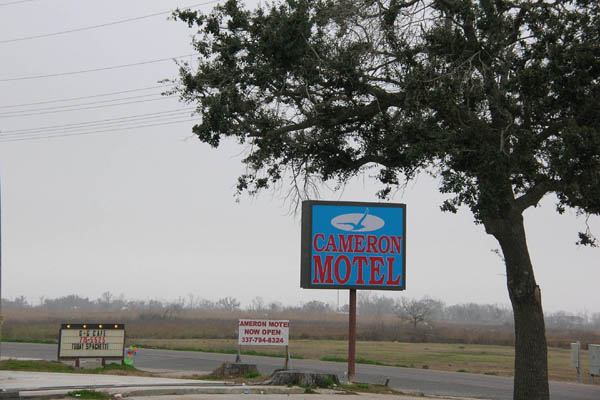
The hustle and bustle of Cameron, Louisiana
During the super-short ferry crossing of the Calcasieu River, we spotted a school of dolphins. I tried and tried to get a photo, but the dolphins were completely uncooperative, repeatedly submerging at the moment my camera fired. Darn digital camera with its delayed reaction!
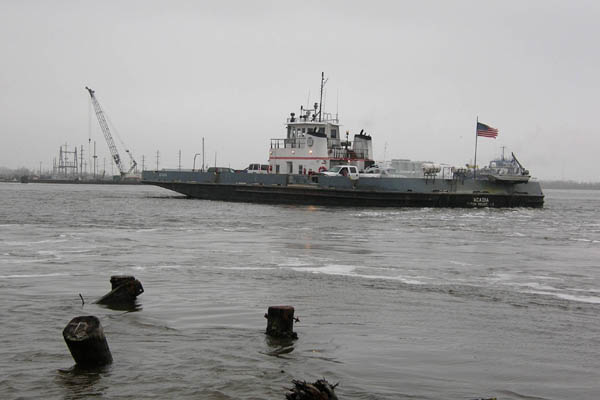
Photo of dolphins, just beneath the surface
Across the channel, we stopped at a beach and searched for sand dollars, with no luck. Where have all the sand dollars gone? My mom and I used to find them all the time in Galveston when I was a kid, but with the one exception of when Tom and I were snorkeling in the Galapagos, neither one of us have seen any in years.
At 2:00 we reached Katy, Texas, where we toured the Forbidden Gardens, 40,000 square feet of miniature reproductions of some of China's premier historical scenes. Forbidden Gardens was opened in 1996 by a Chinese immigrant tycoon, Ira P.H. Poon, who wanted other Americans of Chinese descent to learn something of Chinese culture. Though Katy may seem an unlikely locale, Mr. Poon, who lives in Seattle, wanted the museum built outdoors, and Katy had cheap, flat land on which to build. Also, nearby Houston has the third highest Asian population in America. Open only Friday, Saturday, and Sunday, admission is $10. Visits are by guided tour only, lasting approximately one hour.

The Calming of the Heart Lodge, Forbidden Gardens, Katy, Texas
Though built with Americans in mind, people visit Forbidden Gardens from all over the world, and especially from China. Evidently, the Chinese government makes travel within China so difficult that it's easier for the Chinese to come to Texas and see a miniaturized replica than to attempt to visit the real thing at home.
Qin Shi Huang, the first emperor of China, had a grand tomb constructed for his burial. To protect him in the afterlife, he ordered 6,000 terra-cotta warriors be buried with him. The great emperor died in 210 B.C. at the age of 49 from mercury poisoning, which he consumed in an ill-conceived quest for everlasting life.
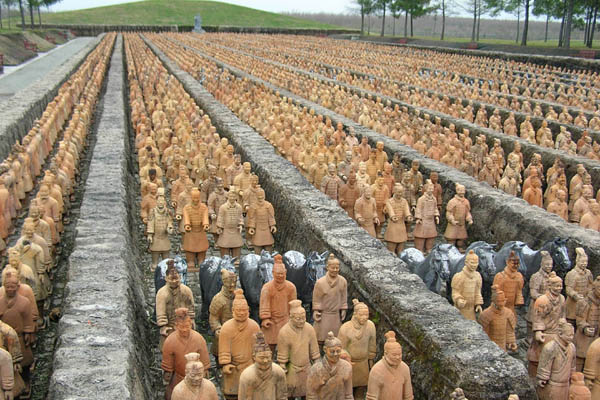
Emperor Qin's terra-cotta army, one-third scale
Buried in the 3rd Century B.C. in Xi'an, China, in the province of Shaanxi, this terra-cotta army was not rediscovered until 1974. The originals in China are six-feet high; the replicas here in the Forbidden Gardens are built to one-third scale. Notice that the soldiers are wearing armor but no helmets. Chinese warriors had helmets, but they only wore them for formal occasions. To wear a helmet in battle was considered cowardly.
Also buried with the emperor, ALIVE, were 3,000 concubines, the tomb architects, and vast numbers of animals to stock the afterworld hunting grounds. Nearby were buried several hundred intellectuals that the emperor simply didn't like.
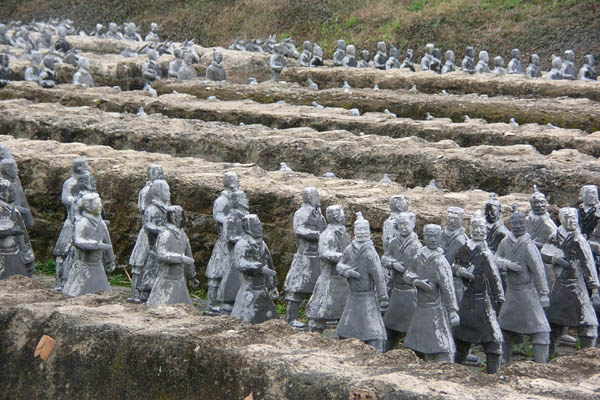
The archers
The Forbidden City of Beijing, built between 1406 and 1420, served as palaces for 500 years of Imperial rule. The 250 acres of palaces and government building were called the Forbidden City because the general population was not allowed inside. Anyone working in the city had to remain there for life because they knew too much to be allowed to leave, and all men working inside the city were castrated so they'd have no reason to touch the emperor's concubines. To work in the city was considered a great honor and also an opportunity for great wealth, not that the eunuchs were paid so well, but that there was great opportunity to steal. And who could really blame them?
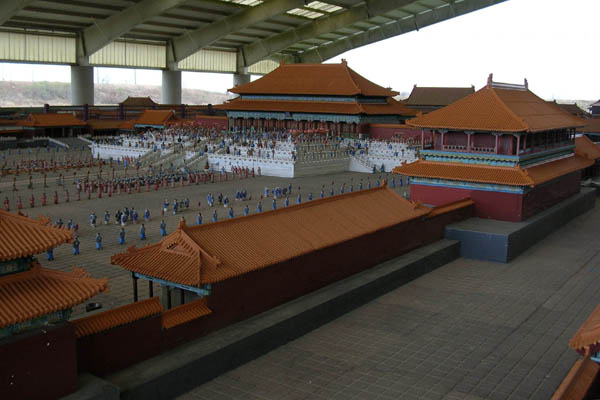
Forbidden City of Beijing, one-twentieth scale
Other exhibits at Forbidden Gardens include a replica of The Calming of the Heart Lodge, a Weapons Room with replicas of some of the weapons discovered with the terra-cotta army, an Architecture Room explaining some of the features of the Chinese palaces of the Forbidden City, and an exhibit of the beautiful canal city of Suzhou.
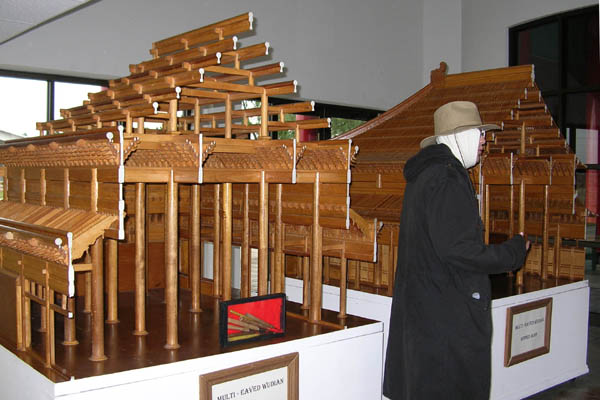
The Architecture Room
We stopped for the night at a Quality Inn in Victoria, Texas. Since we didn't have lunch until 4:00, when we gorged on Whataburger in Rosenberg, we just had some chips and salsa for dinner in our room. The room was supposed to be $90, but as I turned to leave, it suddenly changed to $63. What a deal!
|
|